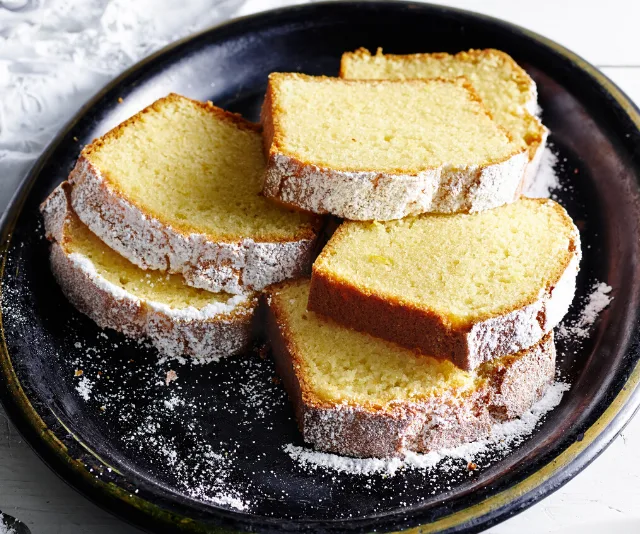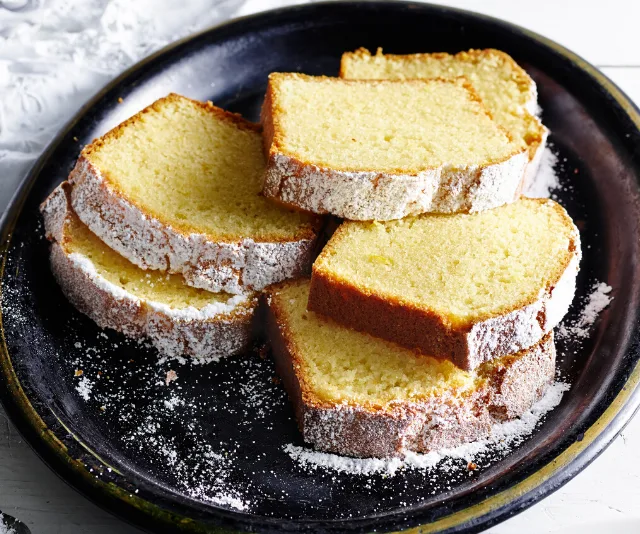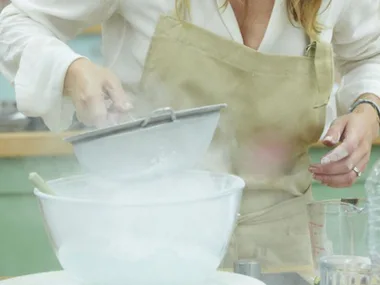Whether you’re a beginner baker or a whiz with a whisk, from time to time you’ll no doubt find yourself wondering if you can substitute certain ingredients when whipping up a little slice of heaven in the kitchen.
As the isolation baking trend sweeps the world in lockdown, you might want to know about some helpful cooking hacks, or just a bit of reassurance that yes, it’s totally fine if your cake cracks at the top.
We asked baking expert Pamela Clark to answer the 20 most common baking conundrums.
Keep on scrolling to find the answer to your cooking question below.

We’re here to help solve all of your baking questions.
(Image: Getty)1. How can I turn plain flour into self-raising flour?
The following proportions are equal to 1 cup of self-raising flour: 1 cup plain flour + 2 teaspoons baking powder, or 1 cup plain flour + 1 teaspoon cream of tartar + ½ teaspoon bicarbonate of soda.
2. I’ve managed to confuse my self-raising flour with my plain flour. How can I tell which one is which?
Mix a couple of tablespoons of one of them into a cup with enough water to make a sticky dough. Drop a dollop of dough into a small saucepan of boiling water. If it’s plain flour you’ve mixed with the water, nothing much will happen; the lump will be leaden and heavy. If you’ve used self-raising flour, the lump of dough will expand and just about double in size. You’ll know within a minute or so which flour it is.
3. I’ve noticed dark brown sugar in supermarkets around Christmas time. Is this better to use in Christmas cakes than regular brown sugar?
Dark brown sugar will make the cake darker and slightly more caramel-flavoured than regular lighter brown sugar.
Black sugar – which is even darker than dark brown – can also be used. Its flavour is quite strong and molasses-like.
Light brown sugar is more refined than the darker sugars, but there are no health benefits using the darker sugars.
4. My biscuits are burning around the outside edge of the oven trays. How can I stop this happening?
Turn the oven trays around during the baking time at least once, more if needed. Opening the oven door won’t hurt the biscuits.
5. Should I cool my slices in their pans?
Yes, slices are almost always cooled in the pans they are cooked in. If they’re not, the recipe will say to line the pans with paper or foil so that you can remove or turn out the slices easily without ending up with a crumbly mess.
6. How do I get the pan clean after cooking caramel in it?
After the caramel has been poured into the cake pan, add enough water to the caramel pan to cover the residual caramel. Let the pan stand for about 10 minutes and you’ll find the caramel will dissolve. If it’s stubborn or has been overcooked, heat the pan with the water slowly over a low heat. They caramel will melt and be easily washed away.
7. Is there a classic amount of sugar that should be added to each egg white in a pavlova recipe?
Yes, the classic amount is ¼ cup (60g) per egg white. However, every single egg is a different size and has different properties.
8. What’s the difference between puff, rough puff and flaky pastry?
All three pastries are made up of varying proportions of flour and fat. The differences are in the methods.
Puff pastry is the most complicated to make, but also the finest in terms of the development of wonderfully light fine flakes of pastry. It requires using a block of fat, which is enclosed in the dough, then many rolling and folding processes follow.
Rough puff pastry is a poor second cousin to puff pastry. The method of handling the fat is different from that used to make puff – its dabbed onto the rolled out dough – but the pastry still requires rolling and folding in a precise way to develop flakes of pastry.
Flaky pastry is more like rough puff than puff pastry, with about the same amount of effort and time required. Commercially, different types and balances of fats and flours are used to make the three different pastries.
9. What is biscuit pastry used for? Can I use shortcrust pastry instead?
Biscuit pastry, as the name suggests is biscuity, not short and flaky like shortcrust pastry. It’s made by beating butter, sugar and egg together, but not too much, then adding flour.
It’s a good pastry if you don’t over-handle it – it loves to crack at rolling-out time if it’s been over-handled. It’s sweet, so it’s only used for sweet pies and tarts. You can use a shortcrust pastry, to which a little sugar has been added, instead of biscuit pastry, if you like.
10. What is bread flour?
Bread flour is simply stronger – that is, it has more gluten – than the regular flour available at supermarket for general use in cakes and biscuits. It goes under various names – strong, bakers, bread-mix, or gluten-enriched flour. It’s available in some supermarkets and in health food stores, as well as shops that carry specialist ingredients.
Bread flour is perfect for yeast doughs used to make bread or pizzas. The flour used for making bread in electric bread makers is bread flour.

Nail your baking, every time!
(Image: Supplied)11. How do I keep buttercream?
Buttercream will keep, covered, at a cool room temperature for about 12 hours. Any longer and the butter begins to develop an “off” taste.
If you refrigerate buttercream, of course it will harden and when you beat it, it will separate. If you allow it to return to room temperature, which takes a few hours, then beat it with a wooden spoon, it should be fine. There is no doubt that buttercream is at its best when used straight away.
12. Sometimes my cakes crack on the top. While it doesn’t change the taste, I don’t like the look of it, particularly if the icing pools in the crack.
Cakes baked in narrow pans, such as ring, loaf or bar-shaped pans, almost always crack. The mixture is forced up quickly because of the way the heat penetrates the narrow cake pans, causing the cracking. In fact, if these narrow cakes don’t crack they will almost certainly be heavy and not that good to eat. Instead of a running icing, you can use a fluffier frosting to fill and hide the crack.
You could also cut the cracked top off before icing the cake, but as you’ll get crumbs in a light runny (glace) icing, you’ll have to hide them sprinkles or coconut. Bad cracks in the top of cakes with a large surface area – square, round or rectangular – usually occur because the cake pan was too small for the mixture or the oven temperature too hot. A small amount of cracking in these cakes can be normal.
13. What is a “stick of butter”? And what is “all-purpose flour”?
In America, a stick of butter is equivalent to 125g. Americans use the term all-purpose flour to refer to what we call plain flour.
14. What size eggs do most recipe developers use?
Usually 59g or 60g. If you have extra-large eggs, one egg measured in a liquid-measuring jog should be ¼ cup (60ml).
15. What is baking powder?
Baking powder is a raising agent consisting mainly of two parts cream of tartar (an acid) to one part bicarbonate of soda (an alkaline also known as baking soda). The acid and alkaline combination, when moistened and heated, gives off carbon dioxide, which aerates and lightens a mixture during baking.
WATCH BELOW: 10 of the most iconic Australian Women’s Weekly birthday cakes. Story continues after video.
16. Can I substitute raw sugar for white sugar when I’m making a butter cake?
No, you need to use a recipe that has been tested using raw sugar. Raw sugar is less refined than either brown or white sugar, and won’t break down and dissolve easily during the baking process. However, you can use brown sugar instead of white sugar, if you like – the regular light variety will be a reliable substitute.
17. Can I substitute oil for butter or cooking margarine?
Sorry, the short answer is “no”. The longer answer is, you really have to know what you’re doing when substituting ingredients for cooking margarine or butter, so you’d have to be prepared to experiment.
18. How do you know when a sponge cake is cooked?
When baked, the sponge will be just beginning to shrink from the side of the pan and it should feel slightly springy to the touch. Turn sponges out immediately; if you leave them in the pan, they will continue to bake, shrink and dry out. Turn onto a wire rack, then immediately turn right-side up onto a baking-paper-lined rack to prevent the wire racks from marking the tops.
19. Why does pastry dough crack when rolling?
If the dough cracks when you’re rolling it out, it may have been chilled too long; allow it to rest for a short period of time. Most commonly, however, the pastry has probably been over-handled. The proteins in the flour (gluten) toughen with over-handling, and will certainly cause the pastry to crack during the rolling process. If you’re making pastry in a processor, pulse the ingredients. If you’re making the pastry by hand, handle it quickly and lightly.
Be sure to roll the dough evenly and lightly near the edges to prevent cracking. Small cracks or tears can be fixed by rubbing a little water along the crack then pulling the edges together and pressing the seam to seal it.
20. What is powdered sugar?
Powdered sugar is simply icing sugar.
Like this story? Check out more of our baking content below
Icing sugar vs. icing sugar mixture: What’s the difference?
Baking soda, bicarb soda, baking powder: What’s the difference?
Puff pasty, fillo pastry and shortcrust pastry: what’s the difference?

.jpg?resize=380%2C285)



